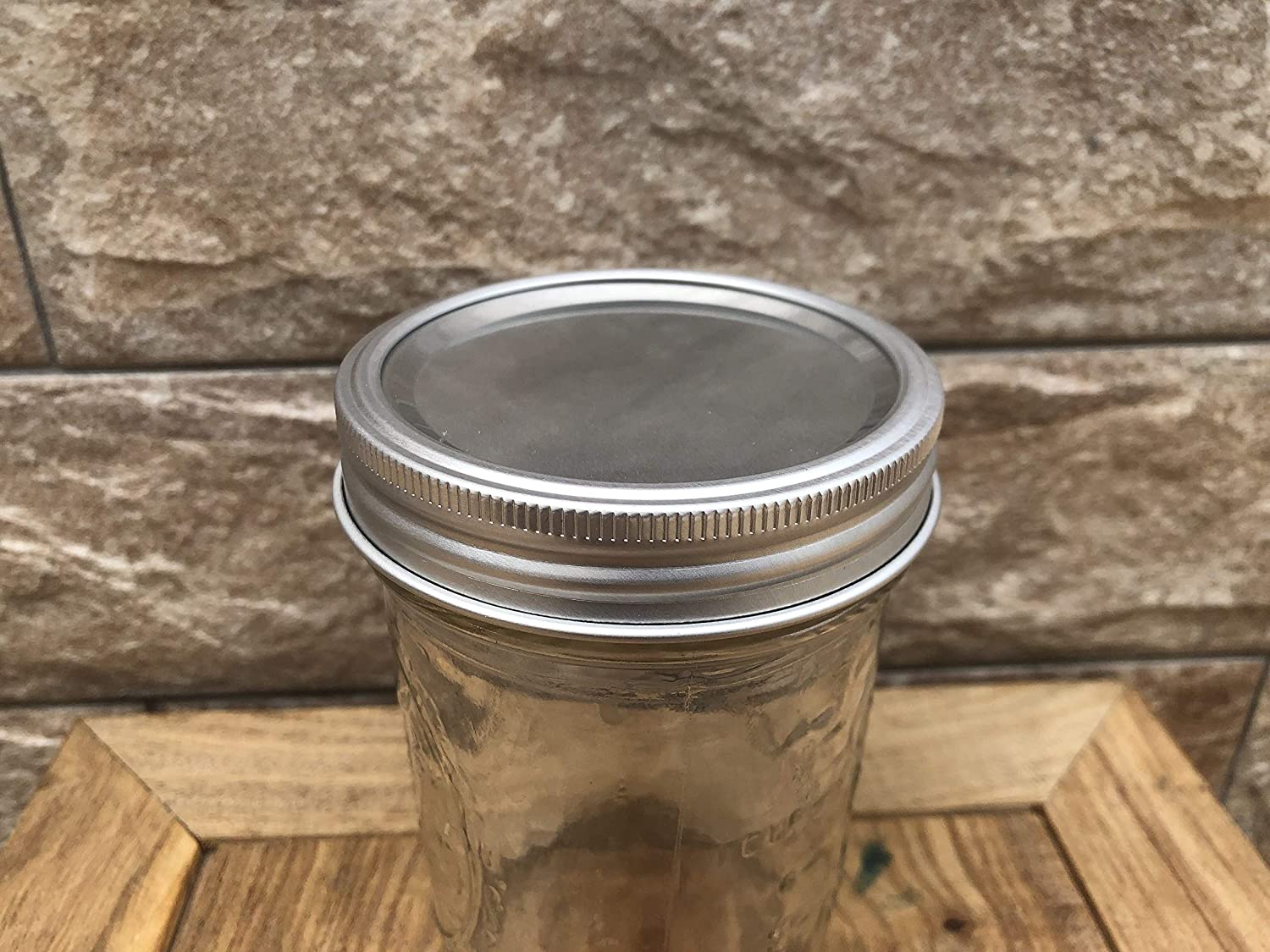 Here is my official position since many of my followers ask and this is a lot to write every time in response to the question. Ithink that anyone that is interested in the Tattler product should purchase onebox to try for their own experience. I hope to answer some of the questions with this post. Getting the one box is a smaller investment and everyoneseems to have a different outcome based on the comments and information I havereceived.
Here is my official position since many of my followers ask and this is a lot to write every time in response to the question. Ithink that anyone that is interested in the Tattler product should purchase onebox to try for their own experience. I hope to answer some of the questions with this post. Getting the one box is a smaller investment and everyoneseems to have a different outcome based on the comments and information I havereceived.
First, I do have concerns on a MFP level that the current comments have said not to”finger tighten” the lids until the jars are completely processed and on yourdishtowel cooling. It’s contradictory to experienced processing in that theseal occurs naturally by the evacuation of the air during the water bath orpressure canning. If you are tighten after the processing you are forcing theseal around the edge but not necessarily evacuating the air. The USDA says thatwhen you take them out of the canner and the lids are not tight NOT to tightenthem. Also additional questions about the obviousness of a seal going bad; does the rigid plastic lid have some ability to bend or bulge?
For processing questions: How do you get them out of the hot water since they are not magnetic? Do they have a tool? or don’t they need to be boiled to sterilize? I also know that over time, some say approximately three processings, you willstill have to purchase new rubber rings.
From my personal experience in canning this is not something that I wouldinvest in because of the amount of jars that I give away and would anticipateno matter how much I begged that I wouldn’t get half back. I also think thatthe people that I help on my page and at classes are so money conscience thatthey would have to be convinced that this was a superior product and that jarswould not fail since many do canning for their families to survive.
The most important reason for me is the fact that theydon’t ping when they are actually sealed. I would miss that and at times, but not always, count on that for safety in my classes!
I feel that the current upside of Tattler is being a BPA free lid and is one ofthe biggest draws for many. Now that Jarden, the makers of Ball and Kerr lids, havealso released their BPA lids I think that we are back to the cost savings long term ofthe re-useable lid.
Finally, Laurie from Common Sense Homesteading, did a great write up on the comparison of Jarden vs. Tattler. The excerpt below is another “con” for me. I think that you will enjoy and be enlightened hopefully by her post.
From Common Sense Homesteading:http://www.commonsensehome.com/comparison-of-jarden-and-tattler-lids/
How much free (unbonded)formaldehyde is typically found in the plastic of the lids (if this has beentested).
From the Tattler website:
Many questions have beenasked about the existence of formaldehyde in Acetal Copolymer. While itis true formaldehyde is present in trace amounts, research proves it is onlyreleased at very high temperatures, well above any temperatures found in homefood canning. Here are the facts.
Heating our brand of acetalcopolymer above 460 degrees F (238 C) should be avoided. At thesetemperatures, formaldehyde, a colorless and irritating gas that can be harmfulin high concentrations, is generated.
*Note: When Ioriginally posted about uncombined formaldehyde in the Tattler lids afterreading The Natural Canning Resource Book in this post, itprompted a visit by Brad Stieg of Tattler, who shared the above informationfrom the Tattler site.
Here is my concern:
When you have two ingredientsgoing into a chemical reaction, A+ B=C. Unless the amounts of A and B equalexactly, down to the molecule, some of A or B will be left in the finalproduct. Those “leftovers” are what could shed into your food with normalcanning use – not the A and B that have already been converted toC. Risks should be minimal to the home canner, as the food withinthe jar is not in constant contact with the lid, but they do exist. Iknow many people are trying to reduce their use of plastic, or have immunesystems that are already compromised, so I felt this was relevant.
Further, even if exposurelevels to the consumer are low, those who work in the plants where theseproducts are manufactured have much higher exposure rates, with accompanyinghealth risks. For instance, here’s a formaldehyde toxicity study – https://oehha.ca.gov/library/chemical-databases
“The binding of formaldehydeto endogenous proteins creates haptens that can elicit an immune response.Chronic exposure to formaldehyde has been associated with immunological hypersensitivityas measured by elevated circulating IgG and IgE autoantibodies to human serumalbumin (Thrasher et al., 1987). In addition, a decrease in the proportion ofT-cells was observed, indicating altered immunity. Thrasher et al. (1990) laterfound that long-term exposure to formaldehyde was associated withautoantibodies, immune activation, and formaldehyde-albumin adducts in patients occupationally exposed, orresidents of mobile homes or of homes containing particleboard sub-flooring.The authors suggest that the hypersensitivity induced by formaldehyde mayaccount for a mechanism for asthma and other health complaints associated withformaldehyde exposure.”
Among the occupations listedin the study were “chemical workers”. It doesn’t say specifically say that thepeople in the study were in any way responsible for your lids, only that theyworked in the chemical industry and were exposed to formaldehyde.








Leave a Reply